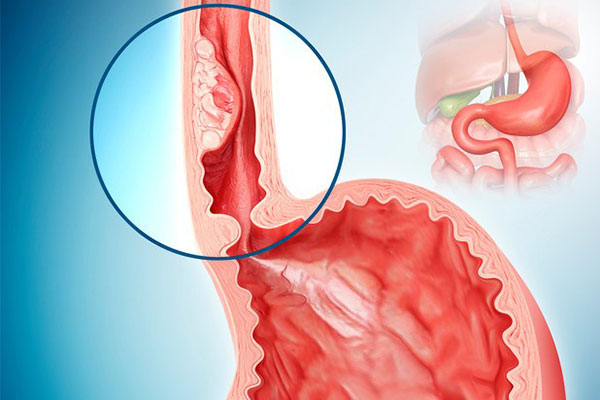Oesophageal Cancer

It was the eighteenth commonest cancer in Hong Kong, accounting for 1.4% of all new cancer cases in 2016. The disease is more common among male population and the male to female ratio is about 4.2 to 1. Oesophageal cancer caused 297 deaths in 2017, accounting for 2.1% of all cancer deaths. It was the tenth leading cause of cancer deaths in Hong Kong.
Symptoms
The first symptom experienced by most patients is progressive difficulty in swallowing, weight loss for unknown reason and heartburn. Other symptoms in the early stage of cancer include:
- Difficulty in swallowing dry solid food
- Coughing
- Discomfort and pain in the chest during eating
- If tumour appears in the upper part of the gullet (near the throat), there will be a feeling of discomfort in the throat or something in the throat when swallowing
- If tumour appears in the middle part of the gullet (near the chest), there will be pain behind the chest bones or back pain during eating
- If tumour appears in the lower part of the gullet (where it connects with the stomach), there will be a bloated feeling in the abdomen
The symptoms of later stage oesophageal cancer include:
- Difficult swallowing will intensify. Gradually, patient can only eat semi-liquid food. Finally, patient may not be able to swallow liquid or saliva
- Tumour in the gullet disturbs normal digestion in the stomach. Patient may feel nausea or even vomit and have regurgitation (bringing food back up).
Diagnosis
Gastroscopy is the most direct way to detect the oesophageal cancer.
Doctor uses a tube-shape endoscope, which looks like a thick cable, to pass through the patient’s gullet to check any change in tissues by naked eye, and remove specimen from suspicious area for pathological examination to confirm whether it is cancer or other diseases.
If patient is confirmed to have Oesophageal Cancer by tests, doctor may still need to perform Computerised Tomography (CT) Scan to ensure whether the cancer cells have spread and in which stage.
Treatment
Treatment of oesophageal cancer depends on many factors, including the stage of the cancer and the overall health of the patient. Common treatments include:
- Removal surgery - doctor shall decide whether to remove part or the entire gullet depending on the patient’s conditions and use the stomach or part of the gut to replace the removed gullet. The patient can still eat solid food. Surgical treatment is usually used for Oesophageal Cancer in the middle or lower part of the gullet. If Oesophageal Cancer is near to the throat, the throat together with the vocal cord may need to be removed in the surgery.
- Radiotherapy (use of high-powered radiation to destroy the growth and division of cancer cells) and synchronous chemotherapy (use of anti-cancer drugs to destroy the growth and division of cancer cells)
- Surgical removal after synchronous chemotherapy with radiotherapy
Prevention
To reduce the risk of oesophageal cancer, citizens should attach more importance on their lifestyle and eating habits. Prevention includes stopping smoking and maintaining a normal body weight.
According to the National Cancer Institute, "diets high in cruciferous (cabbage, broccoli/broccolini, cauliflower, Brussels sprouts) and green and yellow vegetables and fruits are associated with a decreased risk of oesophageal cancer.”
Citizens with Barrett's oesophagus are at much higher risk, and may receive regular endoscopic screening for the early signs of cancer.
*The above information is for reference only, please consult your doctor for detail.

 3405 8288
3405 8288
